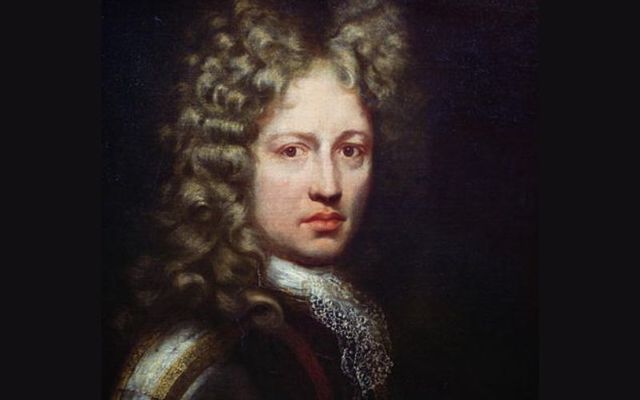The remains of Irish hero Patrick Sarsfield have been discovered in a church in Belgium more than 300 years after his death.
Sarsfield, the Earl of Lucan, is best known for marshaling the defense of Limerick in 1690 following the defeat of King James II at the Battle of the Boyne.
Sarsfield's forces were eventually defeated in 1691 but were able to negotiate the Treaty of Limerick, which enabled Sarsfield and 15,000 Jabobite soldiers to leave for France. Sarsfield and his men became known as the Wild Geese, serving in continental armies after fleeing Ireland.
Read more
Sarsfield was later killed in the service of French king Louis XIV at the battle of Landen on July 29, 1693, during the Nine Years War.
According to modern research, he was buried some days after the battle on the grounds of St. Martin's Church in the town of Huy, modern-day Belgium. However, the exact location of the burial ground remained unknown.
Researchers now believe they have located the ancient burial ground following the intervention of Dr. Loïc Guyon, the honorary consul of France in Limerick, who wrote to the Mayor of Huy to ask for his assistance in locating the burial ground.
A total of 24 bodies were buried on the grounds of the church between 1689 and 1795, according to church burial records, including ten French officers.

Love Irish history? Share your favorite stories with other history buffs in the IrishCentral History Facebook group.
Of the ten officers, eight are named and two are anonymous, while the burial of one of the anonymous officers corresponds exactly with Sarsfield's death, so researchers have concluded that it must be him.
According to the Irish Times, researchers will have definitive proof once skeletons are examined. Sarsfield, who was well over 6 ft tall, was exceptionally tall by 17th-century standards, so his skeleton is likely to be far bigger than other skeletons buried at the church.
Dr. Guyon has also traced Sarsfield's family line to a man who has the same Y chromosome as Sarsfield's father, which will help offer conclusive proof that Sarsfield is buried on the church grounds.
"If we have a match with Sarsfield’s Y chromosome, it will prove it beyond doubt it is him. Boys inherit the Y chromosome from their father and so on through the generations," Dr. Guyon told the Irish Times.
He told the publication that he will work with Limerick-based company Aegis Archaeology Limited to conduct an archaeological excavation at the site. He said the excavation could take place by the summer or by summer 2024 depending on when he receives authorization to carry out the excavation.
Once the remains are found, they will likely be repatriated to Ireland, Dr. Guyon said.
"The first aim of the Sarsfield Homecoming Project is to find and repatriate the remains of Patrick Sarsfield," he told the Irish Times.
"A secondary aim has always been to bring Sarsfield and the whole historical episode of the Flight of the Wild Geese back into the spotlight and educate in particular the younger generations about that important part of Limerick’s history, Ireland’s history, and the history of the ties between France and Ireland."
Dr. Guyon has also announced the launch of a fundraising campaign that aims to raise €90,000 to cover the cost of the excavation. He added that he hopes to secure corporate sponsorship and public donations to help fund the project.




Comments